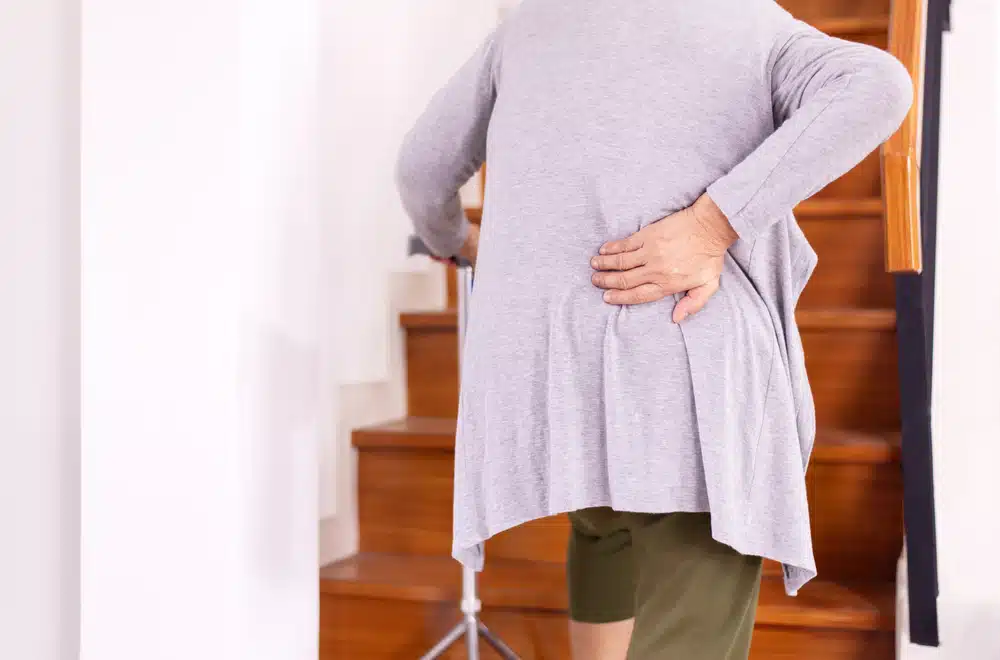Lower back pain is one of the most common medical complaints, and according to the World Health Organization, it’s the leading cause of disability worldwide. At iSpine Clinics where we serve patients across the Twin Cities suburbs of Minnesota and western Wisconsin, it’s an issue we see and help manage frequently, and we’d love to run a blog series teaching more about one of the most impactful pain issues we treat. We’re going to start off by examining the major causes of lower back pain.
The numbers on lower back pain
First, let’s see how prevalent lower back pain really is. The American Association of Neurological Surgeons reports that 75-85% of Americans will experience back pain at some point in their life. Once the pain lasts beyond 12 weeks, it is considered a chronic condition.
Risk factors for lower back pain include being over the age of 30, obesity, a sedentary lifestyle unrelated to body composition, jobs that require repetitive bending or lifting, structural or genetic health issues, such as scoliosis or osteoarthritis, and even mental health issues like depression and anxiety.
The science behind lower back pain
What’s actually happening in your spine is dependent on the cause of your pain, but in general, if you’re experiencing lower back pain, it’s likely that your discs, nerves, joints, or tendons are being affected. Discs can bulge or degenerate, nerves can be impinged or inflamed, and joints and tendons can sprain and ache with illness, injury, or even sensitivity to the weather. You can blame evolution for all this drama—according to Mark Collard and Kimberly Plomp, specialists in Human Evolutionary Studies at Simon Fraser University, “For decades, scholars have assumed that the reason humans are so commonly afflicted with back problems is because we walk on two legs. Our studies are the first to show a clear link between the shape of your vertebrae, bipedalism, and the health of your spine.” As we’ve moved upright in mobility, our spines have been slow to catch up.
The most common causes of lower back pain
Despite being genetically disposed toward spinal issues, it’s not a guarantee that you’ll ever experience lower back pain—you could be one of the lucky 15-25% of Americans who don’t consider it a major medical complaint. So what are the most common catalysts for this affliction?

Disc Issues:
Discs are the small, jelly-like cushions that rest between vertebra and are connected to the spinal bones by thick tendons. Because they’re pulpy in structure, it’s not uncommon for them to bulge out from their position, causing nerve impingement and irritation. Going one step further, they can also herniate, or tear, allowing their soft inside to seep out. Even without major injury such as a bulge or tear, discs can simply wear down and get flatter as we age, offering less protection and more bone-on-bone impact between vertebrae.
Strains and Sprains:
Just like with any other soft tissue in the body, the tendons and ligaments in your spine can become sprained or strained through unsafe movement. In fact, this is the most common cause of lower back pain. Be very conscious of your back when lifting or bending, or even when sneezing or coughing.
Structural Issues:
Your spine can be malformed by structural issues from birth, or it can develop over time. Scoliosis is a curvature of the spine that can be present at birth, or can develop as children grow. Spinal stenosis is an issue most common in people over 50. It involves the narrowing of the spinal cord so that the nerves held within are impacted, causing pain and stiffness.
Fractures:
An actual fragmenting of bone is most often caused by acute trauma, such as car accidents or slip-and-falls, but certain medical conditions can increase the likelihood of a fracture upon impact.
Arthritis:
Osteoarthritis is the most prevalent form of arthritis associated with lower back pain, and ankylosing spondylitis is a more rare form that causes lower back pain as well as inflammation and stiffness in the spine.
Illness and disease:
Though it’s less common, it should still be noted that diseases and their symptoms, such as kidney disease, abdominal aortic dissection, spondylolisthesis, and some cancerous tumors can be the source of back pain. It’s important to see a skilled clinician to help diagnose your specific situation.
Ok, it’s worth getting checked out. What should I do?
iSpine Clinics has clinicians on staff who can review, understand, and help pinpoint the cause of your lower back pain—a great first step is setting up a Pain Care consultation. They’ll assess the quality and severity of your pain, learn more about your lifestyle, health history, and any major medical moments that might be impacting your issues, and recommend a plan of action.
Don’t miss the rest of our series on lower back pain, where we’ll discuss symptoms, prognosis, treatments, and more! We look forward to helping educate you on how to live free from pain.


